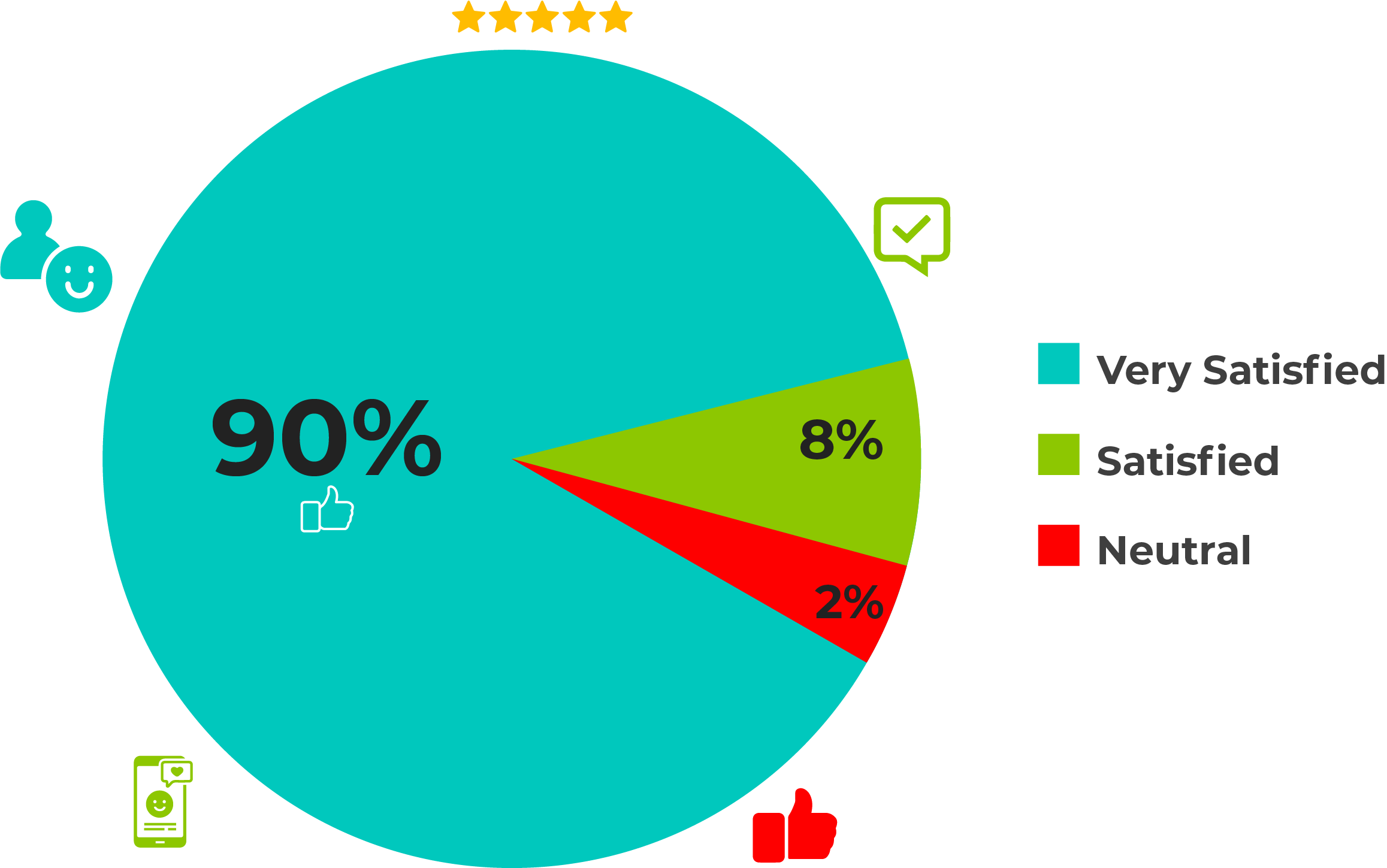As a business owner, creating a website serves a purpose for your business. Depending on the type of website, the purpose of a website may be to share information, sell a product, or provide a service. To achieve these website goals, it is important that you regularly maintain your website. Regular website maintenance involves processes like website content updates, enhancing website security, optimizing website performance, fixing broken links, monitoring web traffic, etc. The complexity of your website determines the types of website support and maintenance services that you’ll be getting. In this post, we’ll talk about website maintenance and support, the importance of regular website maintenance, different types of website maintenance services, website maintenance costs, and where to get the best support service for your website.
What is Website Maintenance and Support?
Web maintenance simply refers to the process of monitoring, updating, and optimizing a website. This is done to ensure the website’s security, optimal performance, and quality user experience. Web support covers all the processes involved in creating a website, building its functionalities, and optimizing it to perform necessary tasks. It includes services like website updates, website design, site maintenance, technical support, content updates, design tweaks, integrations, and much more.
Why is Website Maintenance and Support Necessary?
Every website requires regular maintenance and support. Website maintenance and support are important to keep your website running smoothly and prevent you from running into problems. Some of the essential benefits of website maintenance are:
01. First Impressions
A well-maintained website creates a good first impression on users. When you create a website and perform monthly maintenance, it’ll be evident in its features and functionality. As the first point of interaction with potential customers, your website has to make a positive impression. This boosts your business credibility and instills trust.
02. Business Reputation
The state of your website speaks a lot about your business reputation. If your site is always down or malfunctioning, it is a bad look for your business. However, if your website works well, loads quickly, and provides visitors with valuable information, it fosters trust and protects a good reputation for your business.
03. SEO Strategy
Implementing the best SEO practices is a form of website maintenance. Well-maintained websites offer a great user experience, and search engines reward this. Optimizing your website can improve its search engine rankings, increase visibility, and attract visitors.
04. Sales
When customers have a seamless experience on your website, they’re encouraged to take desired actions, most likely a purchase. Customers are happy to buy from you when they’re satisfied with what they see and feel on your website.
05. Security
Cyberattacks are increasingly high, and even your website is at risk. Security measures have to be implemented to protect your website. That’s why a regular maintenance schedule is important to your website. With essential security updates in place, you can prevent your website from the aftermath of hacking, which may include data theft, lost customers, or even legal troubles.
13 Types of Website Maintenance and Support
Website maintenance is necessary to keep your site updated and working efficiently. Various types of website maintenance and support include:
1. Security Updates
When you speak of website accessibility, it’s not to all, especially when it comes to your website. Your website should be accessible to safe visitors and potential customers, not hackers. This can only be ensured when you prioritize frequent security checks for your website. Implementing basic security measures identifies and addresses potential vulnerabilities, and keeps your website protected from cyberattacks and other external threats. These security measures include performing malware scans, installing firewalls, regular website backup, periodic code updates, updating website software, and regular security monitoring, etc. As a website owner, it’s your duty to ensure your website is secure and protect the information and payment data of your website visitors. You can get an SSL certificate for your domain to ensure the privacy and security of visitors’ communication with your website. Security budget should be included in your website maintenance cost, as security maintenance helps to provide solid cyber protection for your website and its visitors.
2. Plugin and Theme Updates
Plugins offer different features that improve your website appearance and specific functionalities. Outdated plugins clash with other website features and cause malfunctions and glitching, and this can have a negative impact on user’s experience with your website. Plugins and theme updates fix bugs, provide security, and enhance the user-friendliness and functionality of your website, thereby improving the overall website performance. Plugin and theme updates are done to ensure their compatibility with the latest security updates and web standards.
3. Content Updates
Over time, some content will no longer serve any purpose on your website. Keeping irrelevant content can turn your website into a junk house. Regular content checks help you to identify irrelevant and outdated content on your website. These contents can be taken down and replaced with valid and up-to-date information. Ensure that all website contents are up-to-date by:
- Reviewing blog articles to confirm their relevancy
- Updating the list of products or services and corresponding prices
- Removing expired information like past events contents and dates
- Removing outdated images and media and replacing them with current ones
- Improving your website’s visual design and layout.
Keeping your website up-to-date ensures that visitors are provided with accurate information every time. It also makes your website look more professional and attractive to visitors and potential customers. Valuable content on your website effectively engages visitors and keeps them coming back, thereby driving traffic to your website and boosting your site relevance which positively impacts SEO.
4. Backup and Recovery
Having a website means that it’s prone to attacks, some of which happen unexpectedly. Implementing proactive measures like data backup can help reduce the negative impact of data loss on your website’s health. It is important for you to have a recent backup of all your website files and information, as it helps to mitigate the disastrous effects of unexpected issues like hacking, server crashes, accidental data loss, or website corruption. Having a recovery plan puts you one step ahead and allows you to control such situations effectively by providing an instant restoration of your work when the need arises.
5. Mobile Responsiveness
Some people use mobile devices as their primary source of Internet accessibility. Your website should be mobile-friendly, and provide a satisfactory user experience across various mobile devices and different screen sizes. Regular testing should be done to enhance your website optimization and improve its responsiveness on mobile devices. This allows your website to effectively cater to the information needs of mobile users.
6. Broken Link and Error Checks
Broken links prevent visitors from accessing your website and getting the information that they need. They cause pages that are available on your website to be inaccessible to visitors. The likelihood that these visitors will come back to your website is also low, owing to the disappointment and frustrations they experienced previously. Broken links hurt your site’s SEO, so it is important to fix them. Fixing broken links allows for easy navigation, and provides website visitors with a seamless user experience. Your website can also rank higher in search results. You should regularly check your website for 404 errors, broken links, and other issues that may affect user experience and satisfaction, then resolve these issues to improve your website quality and SEO rankings.
7. Performance Monitoring and Optimization
Website updates and performance monitoring involve implementing strategies that enhance the overall speed, responsiveness, and performance of your website. Checking the speed of your website is also important in the performance monitoring process. When visitors have to wait a long time to reach your website due to slow site speed, they can easily get discouraged, and turn to visit a competitor’s website. This has a negative impact on your website’s search ranking because Google and other search engines prioritize websites that load fast. A well-optimized website is essential for user satisfaction and SEO rankings.
8. Security Scanning
Your website has data that needs to be secured, some of which may include personal information about website users. Conducting regular security scans helps to identify potential security issues and get them fixed before they cause significant harm to your website. The goal is to make sure that your website is safe from any potential security threats, thereby ensuring the security of website data and sensitive information, and improving user experience.
9. User Management
Most likely, your website will have users, and these users will have accounts, and these accounts will need to be managed. User management involves creating new user accounts, deleting old user accounts, setting and resetting passwords, and managing user permissions. It also includes periodic cleaning of user lists to identify and remove spam and bot accounts to ensure user data privacy and solid website security.
10. Accessibility Testing
There are categories of people who will naturally find it difficult to use your website due to disabilities like poor eyesight, hearing impairments, physical limitations, and cognitive conditions. Other users may have trouble accessing a website due to slow Internet speed, or from mobile devices. The goal of accessibility testing for your website is to ensure that your website is usable to as many people as possible. This involves making your website content accessible on assistive technologies and adding descriptive alt text to website images. This directly improves user experience and fosters inclusivity.
11. Uptime Monitoring
Once your website goes down, you lose potential customers. This can happen anytime and go on for a long time before you even notice it. Uptime monitoring ensures that you’re alerted when your website is down so that you can immediately take steps to address the issues, and get your website back up and running. Your website should be available for users to access at all times, which is what uptime monitoring helps you achieve as a website owner. With a notification of a downtime, you can promptly respond, and restore your website’s uptime at the earliest, keeping it close to 100% as much as you can.
12. SEO Monitoring
Whenever Internet users search for a product or service or any information related to the contents listed on your website, you want to make sure that your website information is ranked higher, and shown to them, among other search results. Improving your website’s visibility on search engines involves processes like monitoring your website’s SEO. This includes monitoring website traffic, site rankings, and backlinks. SEO monitoring can help you identify potential issues and implement strategies to improve your website’s ranking on search engines. These strategies may involve updating website content with relevant and ranking keywords and staying up to date on the best SEO practices. Continuous SEO monitoring helps to track your progress and measure your success over time.
13. Monitoring and Analytics
Website analytics and data insights on traffic sources, user behaviors, etc., can help you as a website owner make better decisions on the type of content to put on your website, your design choice, and other functionality and feature improvements.
Website Maintenance Costs by Tech & Client
There are a lot of website maintenance companies out there and as a business owner, you have to budget for web maintenance costs because carrying out your website maintenance can be time-consuming. The average cost of web maintenance services can range from $400 to $6,000 per month
Website maintenance plan with Tech & Client costs $599 per month. Our website maintenance package covers all your maintenance tasks and website needs which include monitoring your website for faults, maintaining a secure website, content updates, and much more, all for an affordable fixed monthly flat fee. Our monthly professional website maintenance services offer the following benefits:
- Unlimited requests
- Unlimited revisions
- Priority-based projects
- Dedicated client support
- 12-48 hour turnaround time
- Simple request management platform
- Unlimited users
- Add multiple brands
- Add multiple websites
- 100% file ownership
- Source file
Summary
Website maintenance is a critical process in ensuring great website health. When your website is in good shape, it contributes to the overall achievement of your business goals which includes customer satisfaction, sales, and business success.




